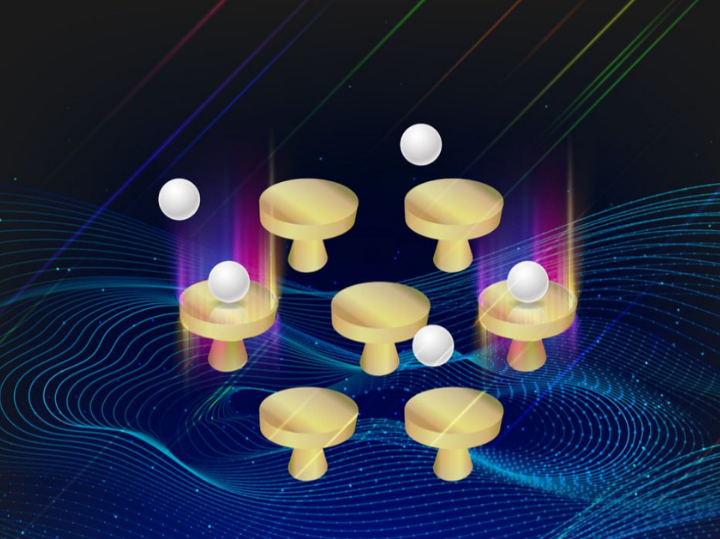Nov 17 2020
As far as imaging the smallest nanoparticles is concerned, existing advanced methods have evident restrictions, making it hard for scientists to study viruses and other structures at the molecular level.
 Scientists have reported a new optical imaging technology, using a glass side covered with gold nanodisks that allows them to monitor changes in the transmission of light and determine the characteristics of nanoparticles as small as 25 nm in diameter. Image Credit: University of Houston.
Scientists have reported a new optical imaging technology, using a glass side covered with gold nanodisks that allows them to monitor changes in the transmission of light and determine the characteristics of nanoparticles as small as 25 nm in diameter. Image Credit: University of Houston.
Researchers at the University of Houston (UH) and the University of Texas M.D. Anderson Cancer Center have developed a new optical imaging technology for nanoscale objects that involves using unscattered light to detect nanoparticles measuring as small as 25 nm in diameter. The study results have been reported in the Nature Communications journal.
Dubbed PANORAMA, the technology involves using a gold nanodisks-covered glass slide, which enables researchers to track variations in the transmission of light and find out the characteristics of the target.
PANORAMA stands for Plasmonic Nano-aperture Label-free Imaging (PlAsmonic NanO-apeRture lAbel-free iMAging), indicating the main characteristics of the technology. PANORAMA can be employed to detect, count, and find out the size of separate dielectric nanoparticles.
According to Wei-Chuan Shih, professor of electrical and computer engineering at UH and corresponding author for the paper, the smallest transparent object that can be imaged by a regular microscope measured between 100 and 200 nm. That is chiefly because, besides being so small, they do not absorb, reflect, or “scatter” sufficient light, which could enable imaging systems to detect their existence.
Another common method is labeling. It needs scientists to know something about the particle under analysis—that a virus has a spike protein, for instance—and to devise a method to tag that feature with a fluorescent dye or some other technique to detect the particle more easily.
Otherwise, it will appear as invisible as a tiny dust particle under the microscope, because it’s too small to detect.
Wei-Chuan Shih, Study Corresponding Author and Professor of Electrical and Computer Engineering, University of Houston
Another disadvantage is that labeling is beneficial only if scientists already have at least some knowledge about the particle they intend to analyze.
With PANORAMA, you don’t have to do the labelling. You can view it directly because PANORAMA does not rely on detecting the scattered light from the nanoparticle.
Wei-Chuan Shih, Study Corresponding Author and Professor of Electrical and Computer Engineering, University of Houston
Rather, the system enables scientists to detect a transparent target that measures as small as 25 nm by tracking light transmission via the glass slide covered by the gold nanodisks. The nearby nanoparticles can be detected by supervising changes in the light.
The optical imaging system is a regular bright-field microscope generally found in any laboratory. Lasers or interferometers needed in several other label-free imaging technologies are not needed for PANORAMA.
The size limit has not been reached, according to the data. We stopped at 25 nm nanoparticles simply because that is the smallest polystyrene nanoparticle on the market.
Wei-Chuan Shih, Study Corresponding Author and Professor of Electrical and Computer Engineering, University of Houston
Besides Shih, scientists involved in the project are PhD students Nareg Ohannesian and Ibrahim Misbah, both from UH, and Dr Steven H. Lin from the Department of Radiation Oncology at M.D. Anderson Cancer Center.
Journal Reference
Ohannesian, N., et al. (2020) Plasmonic nano-aperture label-free imaging (PANORAMA). Nature Communications. doi.org/10.1038/s41467-020-19678-w.